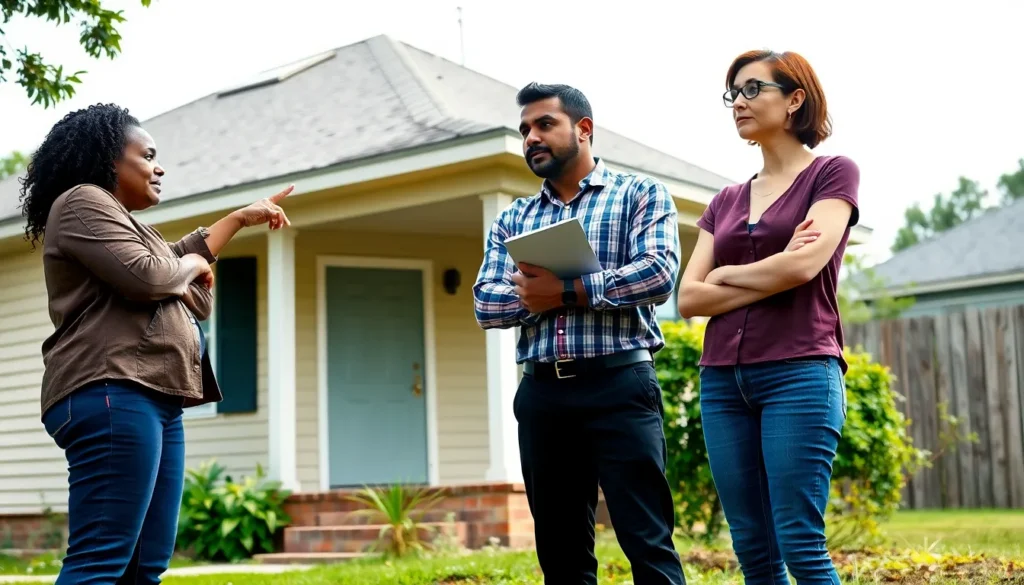In the ever-changing world of real estate, subletting is like finding a hidden treasure chest. Whether you’re a student looking to dodge those sky-high rent prices or a professional on a temporary work assignment, subletting can be your golden ticket to affordable housing. Picture this: you get to live in a chic apartment without the long-term commitment. Sounds like a dream, right?
What Is a Sublet?
A sublet refers to an arrangement where a tenant rents out their leased property to another individual, known as the subtenant. This practice often occurs when the original tenant cannot occupy the space for a specific period. In many cases, subletting allows tenants to recover some of their rental expenses during temporary absences, such as internships or student exchanges.
Subletting typically requires the landlord’s approval, ensuring compliance with lease agreements. Many times, landlords include clauses that specify the conditions under which subletting is permissible. Potential subtenants might also find it appealing, as they can secure housing without committing to a long-term lease.
Commonly, sublets occur in urban environments where housing flexibility is crucial. Students searching for summer accommodations or professionals on short-term assignments benefit significantly from this option. Various platforms and websites facilitate subletting, providing listings that streamline the process for both tenants and subtenants.
Subletting arrangements usually entail specific terms regarding duration, rental price, and utilities. Most agreements clarify the responsibilities of both the original tenant and the subtenant, ensuring mutual understanding. Concisely addressing these elements helps prevent potential disputes and misunderstandings.
Overall, subletting serves as a practical solution in the real estate market, promoting flexibility and affordability for those involved. It conveys a sense of community and shared resources, making housing more accessible to a broader audience.
Benefits of Subletting
Subletting offers numerous benefits, making it an appealing choice for many individuals in the housing market.
Flexibility and Temporary Housing
Flexibility represents a key advantage of subletting. Tenants can rent their space to others during temporary absences, like internships or study abroad programs. Short-term leases attract those who require housing for limited periods. Urban environments frequently feature options catering to individuals with changing needs. Flexible arrangements often include furnished apartments, saving time and money in furnishing costs. Individuals can explore different neighborhoods without committing to long-term leases, enhancing their living experiences.
Financial Advantages
Financial savings play a significant role in subletting’s appeal. Often, sublets cost less than traditional rental agreements. This affordability makes stylish and convenient housing accessible to students and young professionals. Shared living expenses can reduce overall costs, allowing subtenants to benefit from these arrangements. Subletting often includes utilities, simplifying budgeting for tenants. Additionally, landlords may view subletting favorably, leading to negotiated rent prices. With all these factors considered, tenants can enhance their financial well-being while enjoying their living arrangements.
Legal Considerations
Subletting involves various legal aspects that tenants must navigate to ensure compliance and protect their interests.
Lease Agreements and Permissions
Lease agreements often contain clauses that address subletting. Tenants typically need written permission from their landlords to proceed. Many landlords require a formal application process that includes information about the proposed subtenant. Specific conditions, such as the duration of the sublet and rental price, frequently appear in these agreements. Failure to obtain approval may lead to eviction or lease termination. Tenants should clarify these stipulations to avoid potential legal disputes.
Tenant Rights and Responsibilities
Understanding tenant rights is crucial when subletting. Tenants retain the right to receive rent payments, even when subletting their property. Responsibilities include maintaining the property’s condition and ensuring the subtenant adheres to the original lease terms. Legal obligations extend to resolving disputes that may arise between the landlord and subtenant. Tenants must provide a safe environment and handle necessary repairs. Knowing these rights and responsibilities helps tenants navigate their subletting arrangements confidently.
How to Sublet Successfully
Successful subletting hinges on choosing the right subtenant and drafting a solid sublease agreement.
Finding a Subtenant
Begin by utilizing online platforms designed for housing arrangements. Sites like Craigslist, Facebook Marketplace, and dedicated rental services attract numerous potential subtenants. Sharing clear, high-quality photos of the space and writing detailed descriptions enhances visibility. Engage with interested individuals promptly, as speed often determines success. Conduct interviews to assess compatibility with lifestyle and habits, ensuring a good fit. Consider including tenant references and past rental history in your discussions. Screening potential subtenants carefully protects interests and fosters positive experiences.
Writing a Sublease Agreement
Drafting a comprehensive sublease agreement ensures clarity and legal protection. Include essential elements like rental duration, amount, and payment terms. Outline responsibilities regarding utilities and maintenance to prevent misunderstandings. Specify rules about the use of shared spaces and any house rules that apply. Both tenant and subtenant should sign the document and retain copies for their records. If necessary, consult legal resources or professionals to ensure the agreement complies with local laws. A well-defined agreement sets expectations and enhances trust between parties.
Common Challenges in Subletting
Understanding the challenges in subletting promotes informed decision-making. Legal obstacles frequently arise when tenants overlook their lease agreements. Landlords often require formal approval for any subletting arrangements, making it essential to consult the lease before proceeding. Without consent, subtenants face the risk of eviction or legal action.
Communication issues can complicate subletting experiences. Misunderstandings regarding rental terms or property conditions may lead to disputes between tenants and subtenants. Clear expectations regarding payment schedules and maintenance responsibilities minimize potential conflicts.
Finding a suitable subtenant is another common challenge. Many individuals struggle with screening applicants effectively, which can result in undesirable living situations. Interviews and background checks can aid in assessing compatibility and ensuring respect for the tenant’s property.
Additionally, managing financial aspects often proves difficult. Shared expenses may lead to confusion about utility bills or repair costs. Explicitly outlining financial responsibilities within the sublease agreement helps clarify these issues.
Maintaining the property during the subletting period poses concerns as well. Tenants must ensure subtenants uphold the original lease’s conditions. Regular check-ins or property inspections can facilitate this process, protecting the tenant’s interests.
Lastly, emotional ties to the living space can complicate subletting decisions. Some individuals find it challenging to cover their attachments while allowing strangers into their homes. Fostering an open mindset toward the subletting arrangement encourages flexibility and smooth transitions.
Conclusion
Subletting offers a flexible and affordable housing solution for those navigating temporary life changes. It allows individuals to enjoy stylish accommodations without the weight of long-term leases. By understanding the legal aspects and responsibilities involved tenants can confidently engage in subletting arrangements.
Choosing the right subtenant and drafting a comprehensive agreement are crucial steps in this process. With the right approach subletting can enhance financial well-being and foster a sense of community. As urban living continues to evolve subletting remains a practical choice for students and professionals alike seeking to make the most of their living situations.










